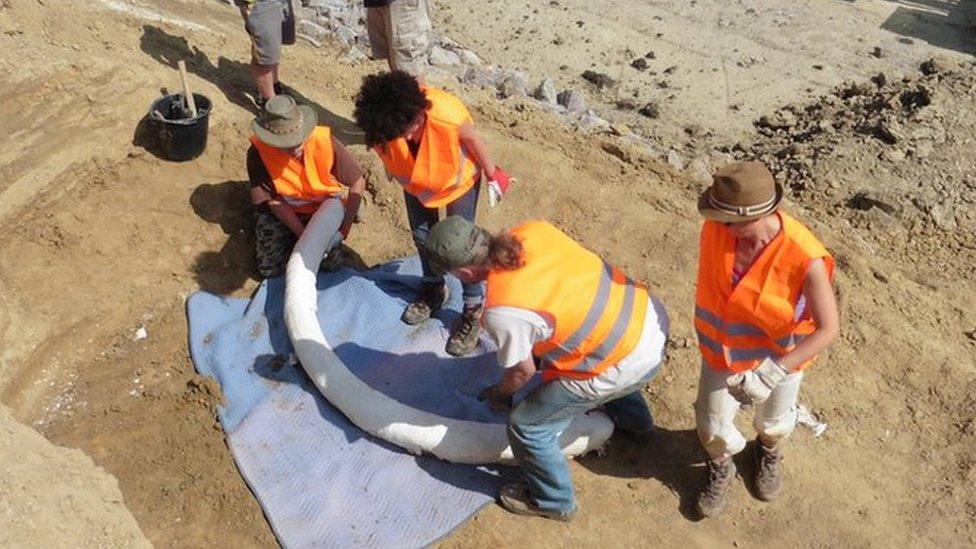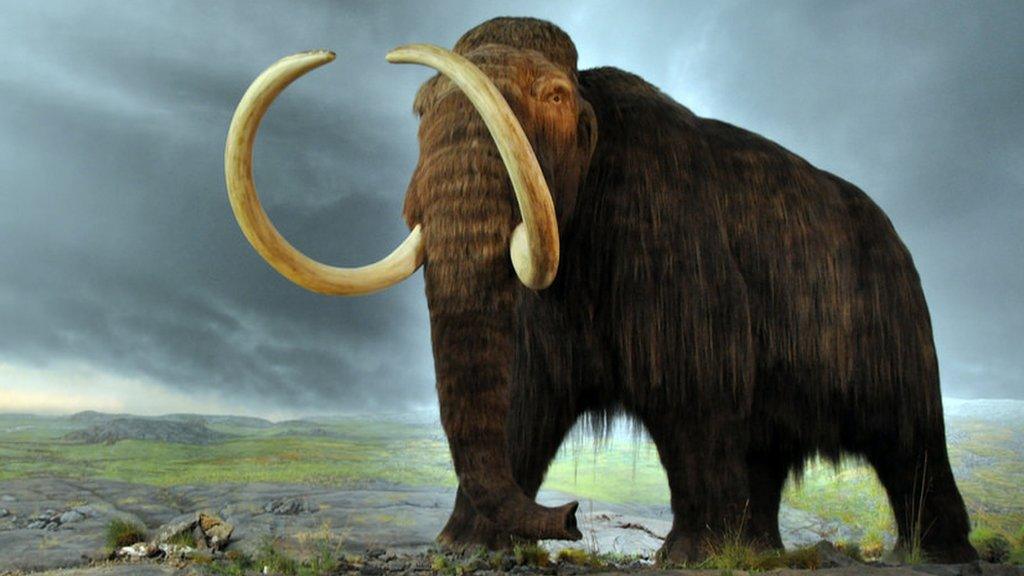West Mersea mammoth tusk found on beach
- Published

The tusk, shown next to a 1m (3ft) measuring rod - was discovered by chance by an archaeological group which supports amateurs
Archaeologists on the Essex coast have discovered a 6ft (2m) long mammoth tusk during an unusually low tide.
The find was made by members and volunteers with Coastal and Intertidal Zone Archaeological Network (Citizan) on Thursday morning off Mersea Island.
Project officer Stephanie Ostrich said: "We came across it by chance. It is incredibly fragile and quite a rare find."
Samples and photographs were taken of the tusk, which was then left in situ.
Citizan works with amateur archaeologists along the coast.
The mammoth tusk was found during a "field walk" in which participants walk along a stretch of beach in a long line and record what they find.
The tusk was discovered about 1km (0.6m) from the coast off Cooper's Beach.

Mammoth factfile

One of the oldest-known musical instruments is a flute made from mammoth ivory
Most mammoth populations had died out by around 10,000 years ago although a small population of 500-1000 woolly mammoths lived on Wrangel Island in the Arctic until as recently as 1650 BC
Scientists can work out a woolly mammoth's age from the rings of its tusk in a similar way to judging a tree's age from its rings

Ms Ostrich said the photographs taken would help the London-based Citizan team create a three-dimensional image of the tusk.
Research will also be carried out into how the discovery tallies with other finds made in the area.
- Published3 March 2017

- Published30 August 2016

- Published13 August 2015

- Published24 August 2010
